

MISSOURI
June 2011

1 of 4


MISSOURI
June 2011


1 of 4
So, it’s back to Missouri for the first time since my introduction to Midwest herping in April 2005. It’s hot
and dry, not the best time of year to be looking for snakes around here, but we’re taking advantage of my
brother’s travel schedule. Ron is attending a conference in St. Louis, adding a few days to get out into the field,
and I’ve come along to join his first herp trip to the Midwest.
Once again, my friend, Wayne, is a most gracious host and excellent guide. Driving some backroads we
come across a female box turtle out for a morning stroll.
We hike a dirt trail, flipping occasional rocks, and checking weeds along the side for any sign of snakes.
Last night we walked the same path, hoping cooler temps would bring out the herps, but all we found was a
Brown Snake on the crawl. Now it’s early in the day, already hot. Out in the sun, a basking Racer spooks at our
approach, and dives into the grass before we get close.
We lift stones that earlier in the season had produced snakes, but now there’s only dust and leaves. Wayne
keeps apologizing. This is his most reliable spot for Red Milk Snakes, but he’s never bothered coming back in
June, because, obviously, it’s too dry.
It’s a special frustration for me. Syspilla is the common snake that defeated me in 2005, when I found only
intergrades farther west, never scoring the classic candy-cane Milk Snake that was my target. I had hoped for a
corrective this time around, but it’s clear that summer has driven syspilla beneath the surface, and I’ll need to
settle for other species.
Wayne keeps his eye on the undergrowth at the foot of an adjacent bluff, where shadows provide cooler
and better conditions. Sure enough, he catches a glimpse of lines among the leaves, reaches in, and comes up
with our first Ribbon Snake. He also demonstrates his technique for roadcruising-by-foot. While Ron and I
continue to glance at the side of the trail near our feet, Wayne is walking with his gaze fixed far ahead. Suddenly
he breaks out into a run
―
“Snake!”
―
and we look up to see something shoot across the path and disappear
into the weeds. Wayne gets to the spot, searches around, and once again emerges with a snake in hand, this
time a Garter.
In the meantime, the rocks continue to yield nothing. We turn one after another, but the earth underneath
is too desiccated for herps. Except . . . we come to a stretch of trail that’s not so dehydrated, a bead of water
trickling down the bluff, the surrounding soil dark and moist.
We flip a few more unproductive rocks, and then . . . syspilla!
Cheers all around as we enjoy every moment of this unexpected find, photographing the snake on an
undisturbed rock near the one where it was found.
After a suitable period of celebration, we restore the flipped rock to its original position, and return the
snake to its hiding place. We get ready to move on, when almost as an afterthought, we remember to look
under the rock that had been our photography stage.
A blink
―
how did the snake move so quickly to this new rock?
―
a realization, and then a shout . . .
another syspilla!
After our side-by-side Milk Snakes we’re pretty excited, but the sun is high above (now it’s getting really
hot), and my expectations disappear with the shade. Ron and Wayne are exploring somewhere off-trail, and I’m
getting ready to turn around, when I reach another patch of ground that seems to have retained a little
moisture.
I grab the top of a likely-looking rock, and pull it back from another it’s leaning upon. At the bottom of the
opening, a glimpse of light brown pattern. I call to Wayne, who runs to get Ron, and together we remove the
heavy stone hiding this beautiful pale Copperhead.
We break for lunch, and decide our best bet in this heat is to head for water and search for basking turtles.
Bluffs rising above a river mark our destination.
The turtles turn out to be Maps, a pleasant surprise for us east-coasters, who don’t have this species back
home (except for a tiny introduced population in the Delaware River).
From this small tributary, Wayne takes us down to the real River, the (yes, it’s wide) Missouri.
The muddy banks are covered with frogs that spring out of our way each time we take a step, their jumps
accompanied by a punctuated “Erp!”
The turbid water is rippled with turtles, including a couple of Softshells that cruise back and forth, and
Maps that climb out to bask on logs.
We walk the river’s edge and follow a swimming Water Snake that glides up into a low-lying tree.
Frogs are moving all around us, chirping their alarm, and jumping away when we get too close. But then
one call continues steadily, and we suspect what it means. Tracking the distress signal, we make our way
through the bushes, and peering through vegetation, see the last bit of frog disappear from view.
Departing the river, we hit another spot, a rocky hillside that’s been good to Wayne in the past. With the
approach of evening and a passing thunderstorm, we hope cooler temps and higher humidity will stimulate
snake activity, but after lots of hiking and flipping, we still strike out.
At least we’re rewarded with one last find for the day, a box turtle rescued from the highway, as we make
our way home.
Plains Leopard Frog (upper)
Rana blairi
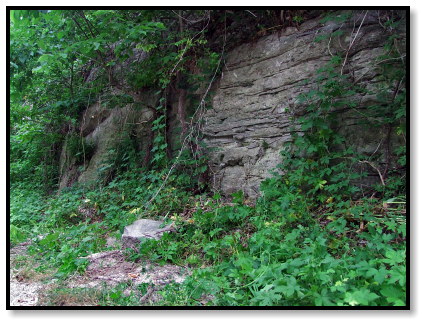
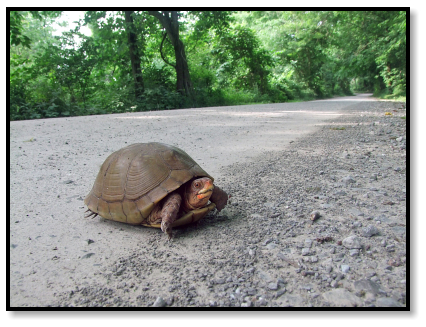
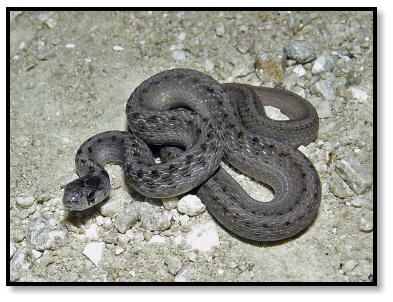

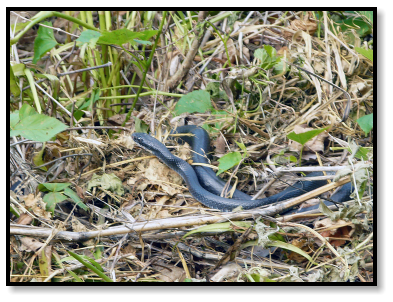
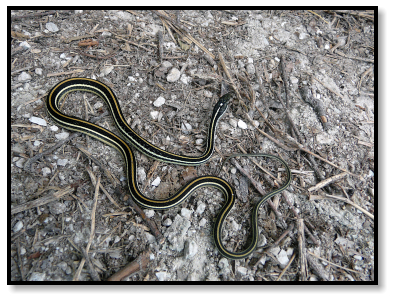
Three-toed Box Turtle
Terrapene carolina triunguis
Midland Brown Snake
Storeria dekayi wrightorum
Eastern Yellowbelly Racer
Coluber constrictor flaviventris
Western Ribbon Snake
Thamnophis proximus proximus
Intergrade Eastern/Red-sided Garter Snake
Thamnophis sirtalis sirtalis x T. s. parietalis
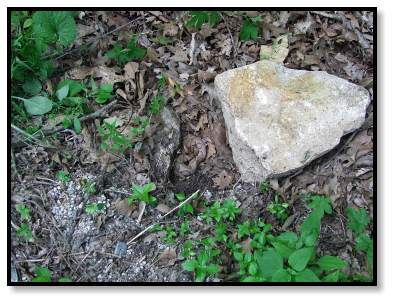
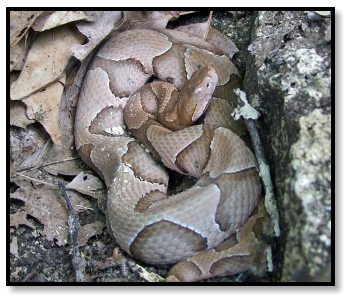
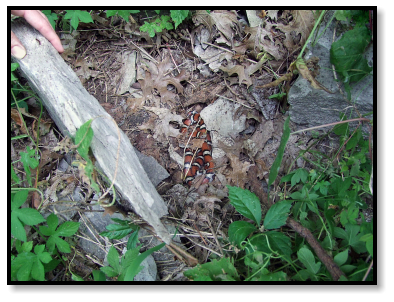
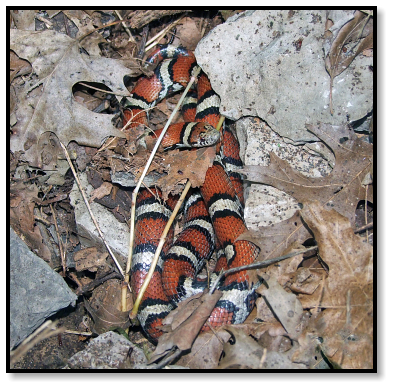
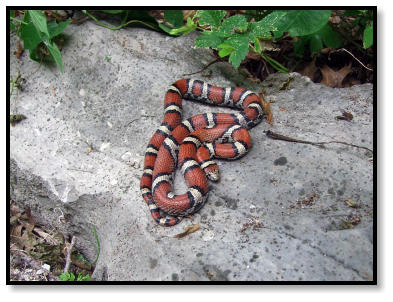
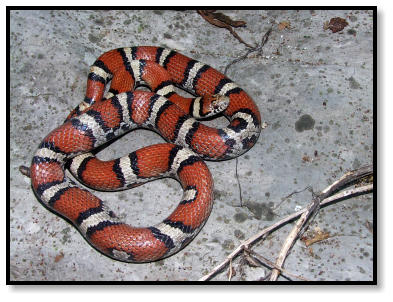

Red Milk Snake
Lampropeltis triangulum syspilla
Osage Copperhead
Agkistrodon contortrix phaeogaster

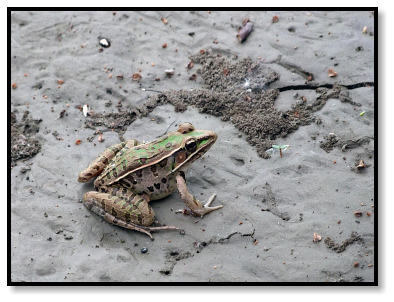
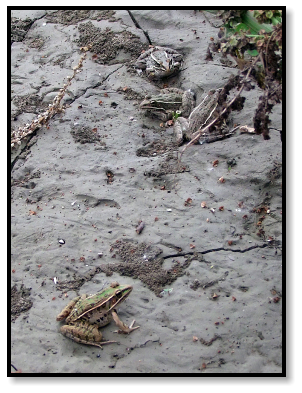
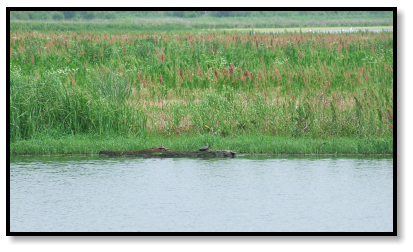
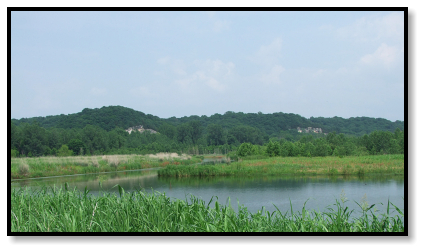
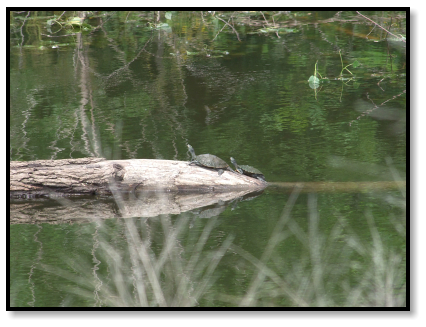
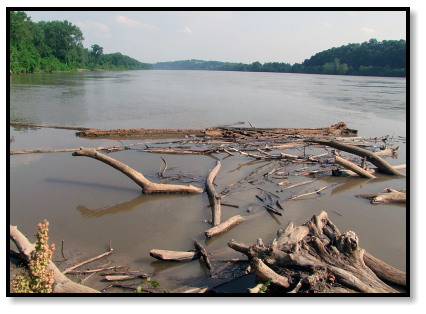
Northern Map Turtle
Graptemys geographica
Southern Leopard Frog
Rana sphenocephala
Ornate Box Turtle
Terrapene ornata
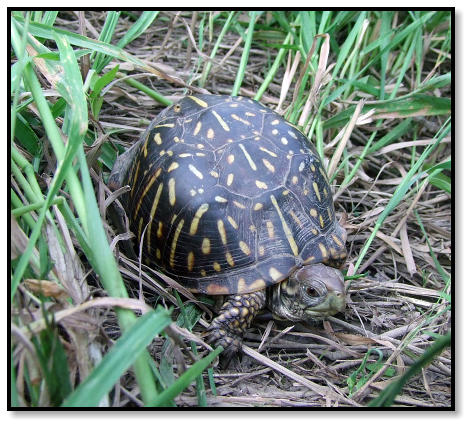
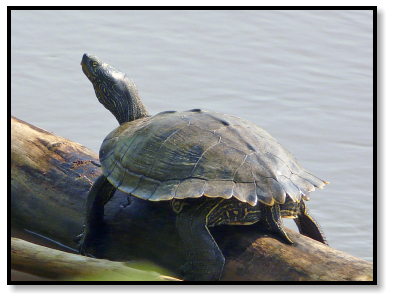
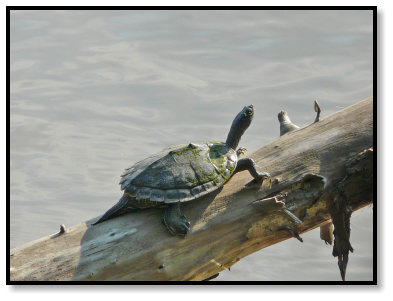
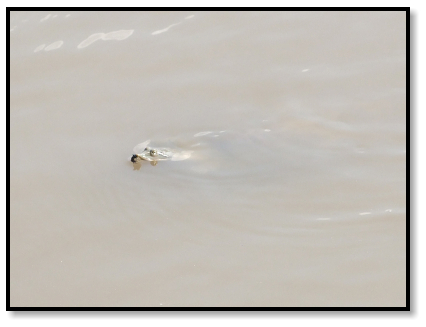
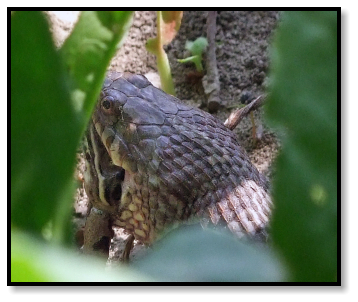
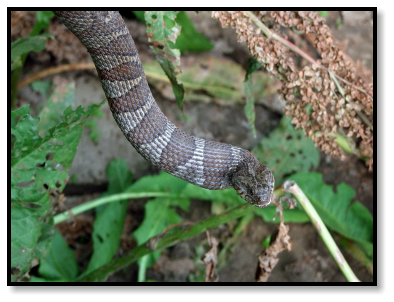
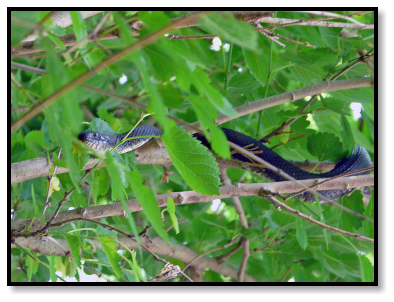
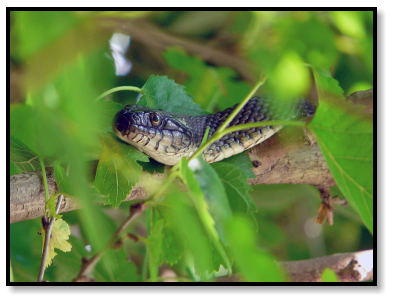
Midland Smooth Softshell Turtle
Apalone mutica mutica
Northern Map Turtle (male)
Northern Map Turtle (female)
Northern Water Snake
Nerodia sipedon







